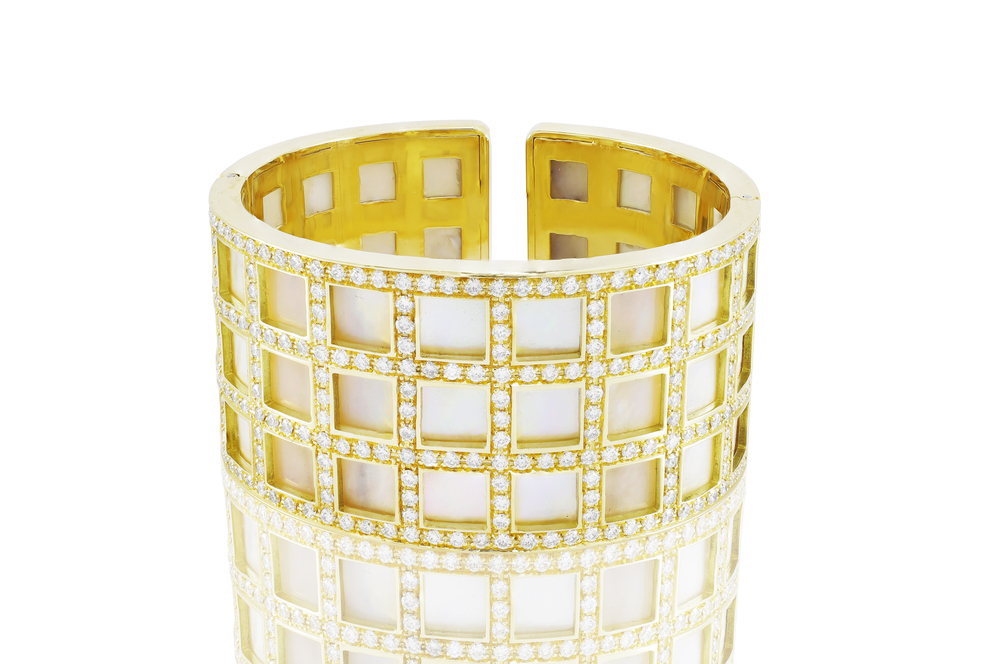Precious metal jewelry, with its clean, sculptural lines, is on a lot of must-have lists this season – think hoop earrings, smooth shiny cuff bracelets and minimalist-style ring design.
Just what are precious metals and how do you decide on one for your jewelry?
Metals are considered precious if they are natural elements, which makes them very rare and valuable. These precious metals are commonly used in jewelry making:
- Gold – Popular for its rarity and luster, it’s one of the most versatile of the precious metals and is available in different shades of yellow, white and rose.
- Silver – Also known as Sterling Silver, it is a softer metal than gold or platinum and can tarnish over time much faster than the other metals.
- Platinum – A white metal that’s sometimes considered more precious than gold, platinum is one of the heavier metals used in jewelry. It is also naturally hypo-allergenic.
- Palladium – Less expensive and lighter in weight than platinum, palladium requires specialized equipment to cast. Platinum is a white metal with a slight grey tone.
Jewelers also dabble in the following alternative or modern metals:
- Cobalt – Harder than stainless steel, it is harder to scratch. It, too, is also hypoallergenic.
- Stainless steel – A silvery?white metal with a mirror finish, it retains its shine and color and resists tarnishing. The most popular uses for stainless steel in jewelry are watches, bracelets, rings, earring posts and body jewelry since it is easy to clean.
- Titanium – Titanium’s strength, durability and luster make it an ideal choice for daily wear jewelry, such as rings and bracelets
- Tungsten – A very heavy metal with a steel gray to tin?white color, tungsten is a very strong metal, is hypoallergenic and can be polished to a lustrous finish.
- Ceramic carbide – This man?made metal is extremely durable, nearly impossible to scratch and completely hypoallergenic.
5 Factors in Choosing a Metal for Jewelry
- Life Span. Is the metal able to withstand daily wear and tear?
- Heft. Do you appreciate the weighty feel of jewelry? Or would you rather feel like you are wearing nothing at all?
- Strength and Restoration. All precious metals eventually will scratch or dent. Can the metal be re?conditioned to make your jewelry look like new?
- Allergy Factor. Metals that are hypoallergenic minimize the possibility of an allergic reaction.
- Value. The worth of any metal fluctuates according to the laws of supply and demand. Price change daily, although the more rare a metal, the less available it will be, which can drive up demand as well as the likelihood it will maintain its intrinsic value over time.
Indy Facets – Everyone’s Private Jeweler
Indy Facets seamlessly blends the expertise and full service of a traditional jewelry store with the value and convenience of a personal jeweler experience. We give you the face-to-face interaction with an expert that you deserve, in a private setting where you can relax and feel comfortable. Owner/Designer Shaun Goodyear and his team have earned an excellent reputation as Indiana’s private jeweler for engagement rings, custom design, investment grade diamonds, luxury Swiss timepieces, estate jewelry, jewelry repair and the highest level of customer service, available to you from an onsite, state-of-the-art Custom Design Studio and Gemological Laboratory by private appointment only. You are guaranteed a unique, fun and exciting experience without the hype, pressure, judgment or uncertainty associated with other jewelry shopping options. We schedule appointments at your convenience, and are usually available evenings and weekends, too. Call 317-810-1665 for your private appointment or schedule online, indyfacets.com/schedule.


